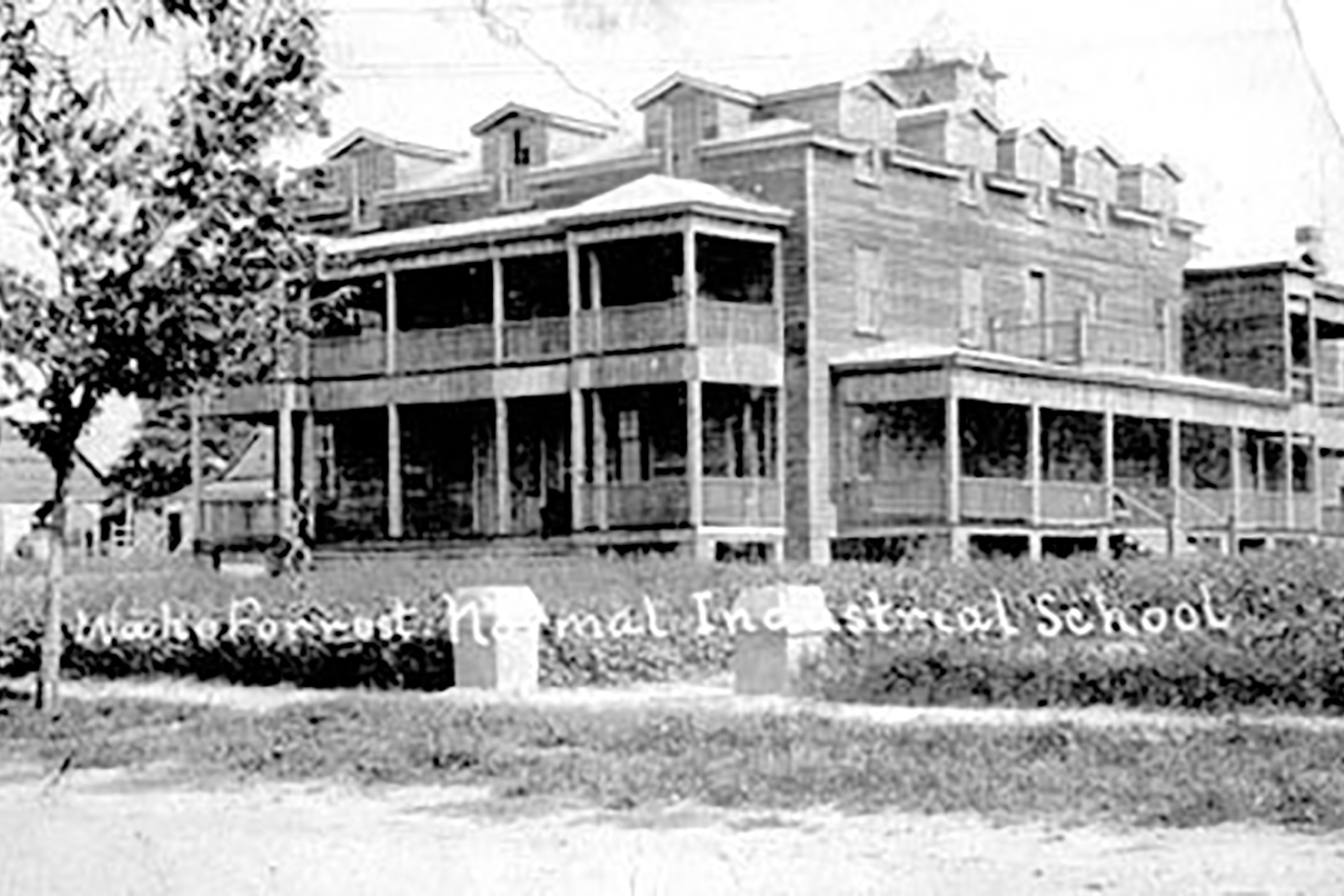Our Heritage
When We Are Us

Allan Young was a prominent community leader in Wake Forest who dedicated his life to advocating for education, political rights, and social freedoms for African Americans. He organized local Emancipation Day celebrations, supported the Rural Progressive Uplift organization, and advocated for increased voter registration and electoral participation among African Americans. His efforts to improve local infrastructure and expand opportunities reflected his commitment to fighting injustice and fostering a more democratic society.
One of Young’s most significant accomplishments was his work in advancing African American education in Wake Forest. Born in 1875 to Ailey Fowler Young and Henry Young, both formerly enslaved individuals, Allan Young grew up during an era when racial discrimination severely limited access to public education for African Americans. Before the Civil War, southern states like North Carolina banned African American education, fearing that literacy would threaten the established racial hierarchy of slavery. Young’s determination to overcome educational barriers became a driving force in his life and work as he worked to combat the legacies of slavery.
In 1905, Allan Young worked with other community leaders to establish the Wake Forest Normal and Industrial School. Normal schools combined teacher training with practical vocational training for African American students. Young developed a well-rounded curriculum covering English, Latin, French, and civil government. The school also taught industrial skills and provided trade knowledge to prepare students for life’s practical duties. Male students received training in farming and manual trades, while female students learned skills like housekeeping, sewing, and cooking. Night classes were offered for adults, widening the accessibility to education. The establishment of schools like the Wake Forest Normal and Industrial School paved the way for better employment opportunities and improved quality of life for the community.
Initially, the Wake Forest Normal and Industrial School began as a mission school affiliated with the Spring Street Presbyterian Church, known as the Presbyterian Mission School for Colored Boys and Girls. The Presbyterian Board of Missions for Freedmen partially funded the school for its first decade. It started with 30 students, with Young serving as both principal and the sole teacher during its inaugural year, operating out of an empty mattress factory on White Street.
By 1930, the Wake Forest Normal and Industrial School campus included a two-story main building, with grades six to 11 on the lower floor and a dormitory for girls above. Surrounding this central structure were smaller buildings, including an elementary facility on East Pine Street. The school served over 300 students and employed around a dozen faculty members, many of whom were part of Young’s family. His wife and several of his children took on teaching roles, fostering a strong sense of community around education.
Allan Young’s dedication to education, social progress, and civil rights left a lasting impact on Wake Forest. Despite the closure of the Wake Forest Normal and Industrial School in 1957 and the demolition of its buildings, Young’s vision for education continued to shape the community for generations.
Earlier this year, the Wake Forest Historical Museum (WFHM) hosted the “Making Our Voices Heard” exhibit, presented by NC Historic Sites, which highlights the stories of North Carolinians like Allan Young, who have raised their voices against injustice and fought for a more democratic society. Stay tuned as we explore these themes in WFHM’s 2026 exhibit commemorating America’s Semiquincentennial.
Carolyn Rice
Manager of operations and external relations of the Wake Forest Historical Museum and Wake Forest College Birthplace.

